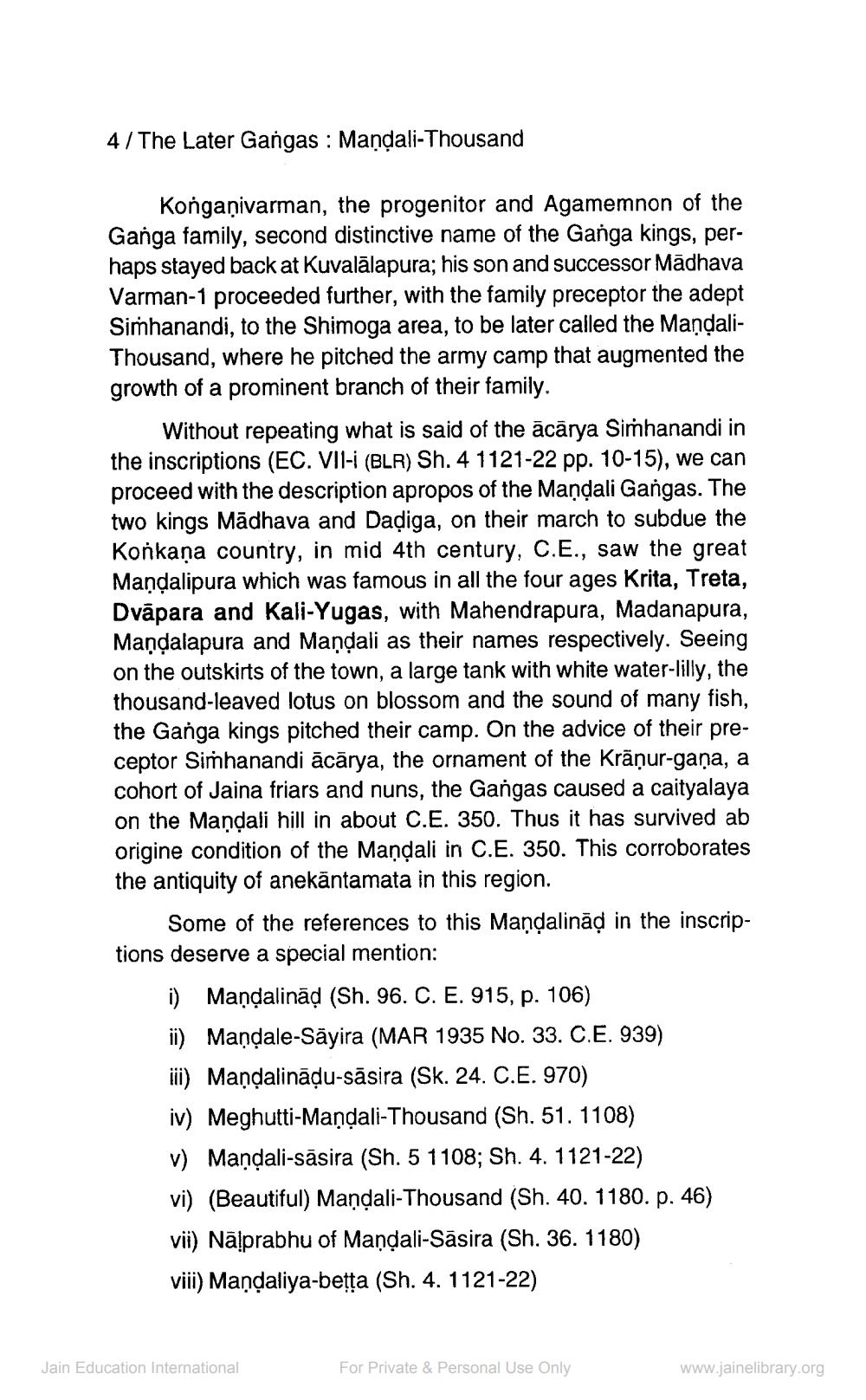________________
4/The Later Gangas: Mandali-Thousand
Kongaṇivarman, the progenitor and Agamemnon of the Ganga family, second distinctive name of the Ganga kings, perhaps stayed back at Kuvalālapura; his son and successor Madhava Varman-1 proceeded further, with the family preceptor the adept Simhanandi, to the Shimoga area, to be later called the MandaliThousand, where he pitched the army camp that augmented the growth of a prominent branch of their family.
Without repeating what is said of the ācārya Simhanandi in the inscriptions (EC. VII-i (BLR) Sh. 4 1121-22 pp. 10-15), we can proceed with the description apropos of the Mandali Gangas. The two kings Madhava and Daḍiga, on their march to subdue the Konkana country, in mid 4th century, C.E., saw the great Maṇḍalipura which was famous in all the four ages Krita, Treta, Dvapara and Kali-Yugas, with Mahendrapura, Madanapura, Mandalapura and Mandali as their names respectively. Seeing on the outskirts of the town, a large tank with white water-lilly, the thousand-leaved lotus on blossom and the sound of many fish, the Ganga kings pitched their camp. On the advice of their preceptor Simhanandi ācārya, the ornament of the Kräṇur-gana, a cohort of Jaina friars and nuns, the Gangas caused a caityalaya on the Mandali hill in about C.E. 350. Thus it has survived ab origine condition of the Mandali in C.E. 350. This corroborates the antiquity of anekāntamata in this region.
Some of the references to this Mandalinaḍ in the inscriptions deserve a special mention:
i) Mandalināḍ (Sh. 96. C. E. 915, p. 106)
ii) Mandale-Sayira (MAR 1935 No. 33. C.E. 939)
iii) Mandalināḍu-sāsira (Sk. 24. C.E. 970)
iv) Meghutti-Mandali-Thousand (Sh. 51. 1108)
v) Maṇḍali-sāsira (Sh. 5 1108; Sh. 4. 1121-22) vi) (Beautiful) Mandali-Thousand (Sh. 40. 1180. p. 46) vii) Nälprabhu of Maṇḍali-Sasira (Sh. 36. 1180) viii) Mandaliya-beṭṭa (Sh. 4. 1121-22)
Jain Education International
For Private & Personal Use Only
www.jainelibrary.org




